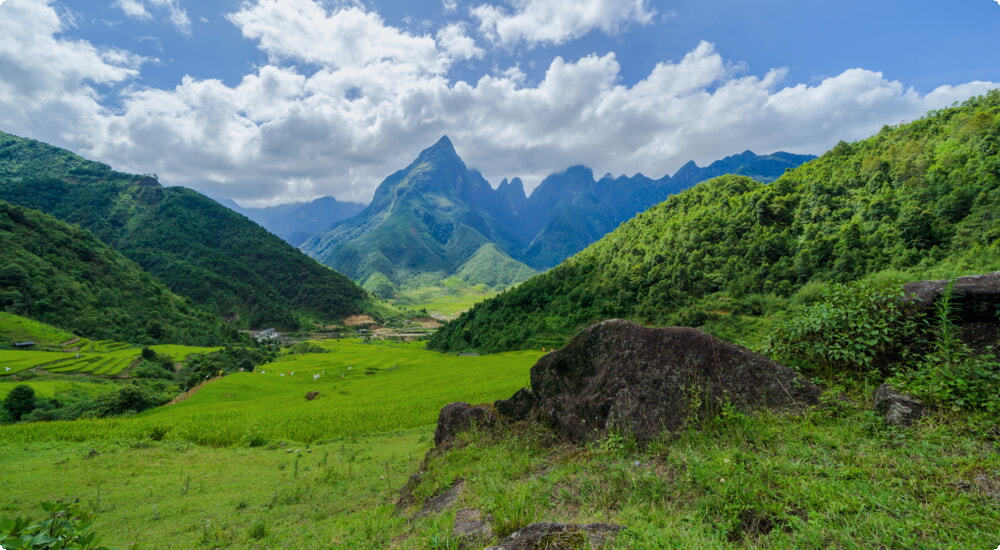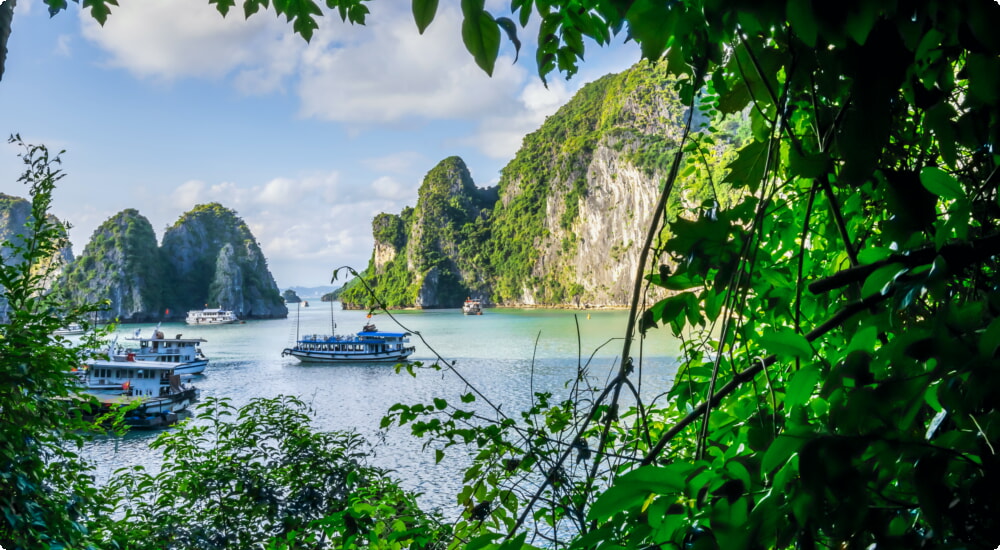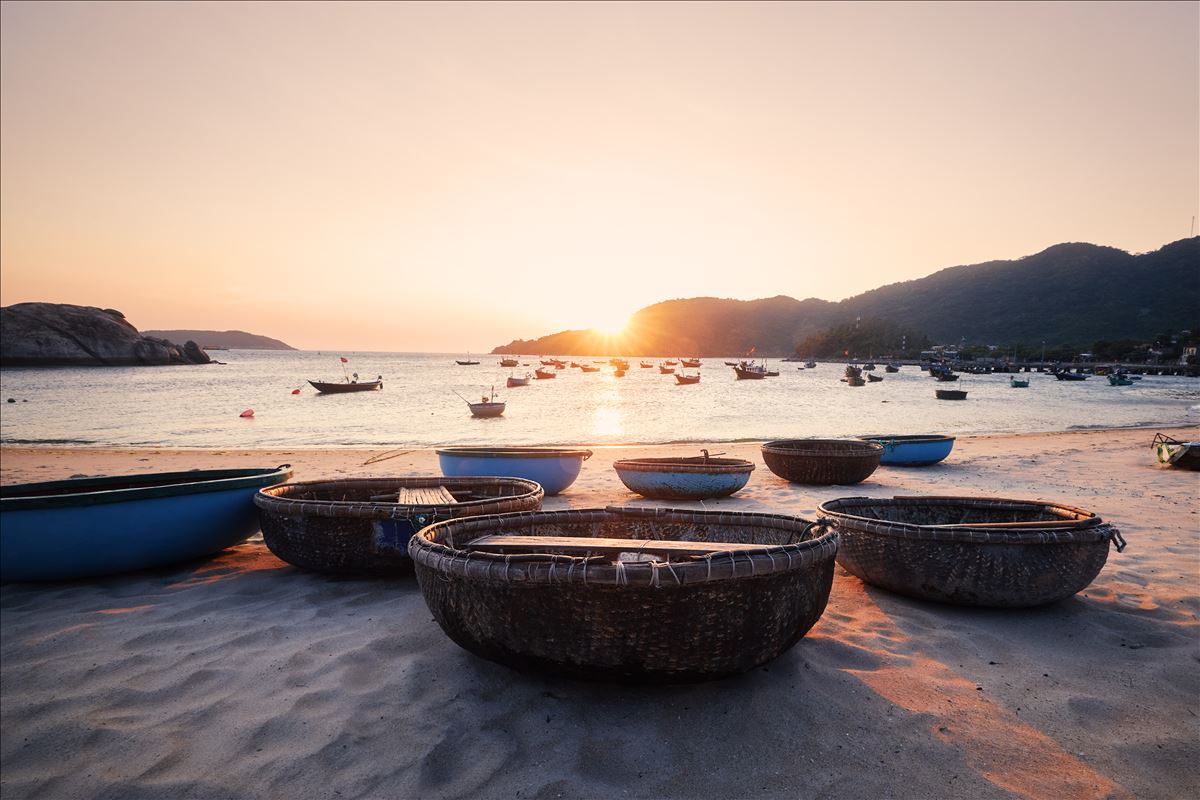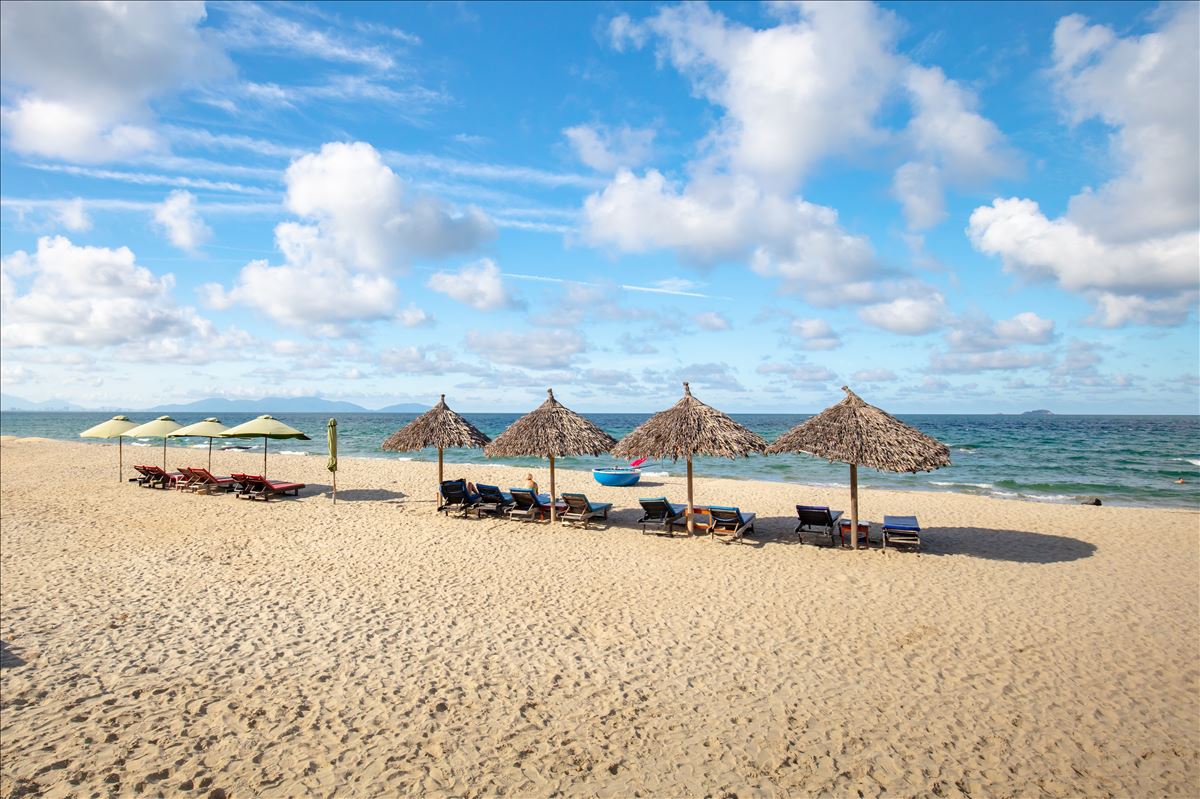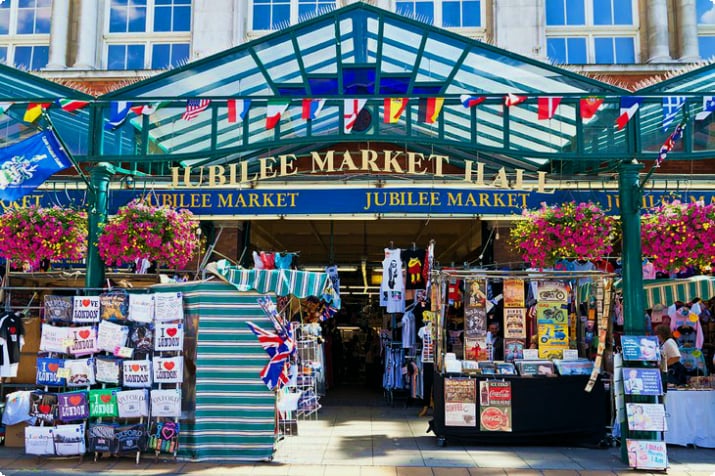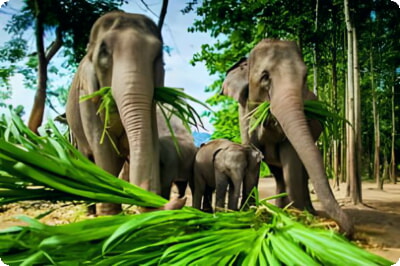Why at the northernmost part of Vietnam, Ha Giang is a province that often escapes the radars of typical travelers. This territory, bordered by breathtaking mountains and deep valleys, is a world apart where nature and culture meet in spectacular ways. For those seeking to explore Ha Giang, Vietnam offers a unique gateway to unforgettable experiences, guided by local knowledge and hospitality. Ha Giang is not just a travel destination; it's an invitation to an adventure where every turn offers a new wonder.
Geographical Overview of Ha Giang
The province of Ha Giang is located at the northern border of Vietnam, sharing its boundary with China. It is famous for its karst landscapes, which are among the most impressive in Southeast Asia. The terrain is predominantly mountainous, with peaks that seem to defy gravity and hidden valleys waiting to be explored. For those wishing to delve further into the geographical and cultural wonders of Vietnam, Vietnam Tours offers a comprehensive and fascinating overview of the country, with Ha Giang being a jewel among its many captivating destinations. The province is also traversed by several rivers, the most significant being the Lo River, a silver thread winding through deep valleys and helping shape the region's spectacular landscape.
Historical Significance of Ha Giang
Ha Giang is more than just a spectacle of nature; it is a living history book that tells the tales of peoples and cultures that have thrived there through the ages. Since prehistoric times, this region has been a crossroads of civilizations, as evidenced by the numerous archaeological sites scattered in its mountains. Later, it became a stage for major historical events, particularly during periods of resistance against foreign invasions. The presence of fortresses, watchtowers, and ancient trails bears witness to its strategic importance. Ha Giang is not only a place of natural beauty but also a silent witness to the resilience and cultural richness of Vietnam.
Exploring the Dong Van Karst Plateau
The Dong Van Karst Plateau, recognized as a UNESCO Global Geopark, is one of Ha Giang's jewels. This extraordinary landscape is characterized by its imposing rock formations, deep canyons, and mysterious caves, forming a unique ecosystem in the world. The plateau not only offers breathtaking panoramic views but also serves as a backdrop to captivating stories of local life. When exploring this geopark, you can expect to:
- Discover fossils dating back millions of years, testifying to the major geological changes of the earth.
- Visit traditional villages perched on mountains, where cultures and customs have been preserved through the centuries.
- Explore caves and caverns, offering a glimpse into Ha Giang's fascinating underground world.
The Dong Van Karst Plateau is not just a natural wonder; it's an adventure waiting to be experienced, a place where every turn on the road reveals ancient stories and endless landscapes. For those craving adventure, Ha Giang is a destination promising endless discoveries.
It is by embarking on the winding roads of Ha Giang that one begins to grasp the extent of its natural and cultural splendor. The province, with its karst landscapes, terraced rice fields, and tribal communities, bears witness to the unspoiled beauty of rural Vietnam. By continuing to discover Ha Giang, we will delve into the details of terraced rice fields, the agricultural heritage of the region, explore the cultural heritage through ethnic tribes, and tackle the challenge of its adventurous roads.
5. The Splendor of Terraced Rice Fields
One of the iconic images of Vietnam is its terraced rice fields, and Ha Giang offers some of the most beautiful examples of these agricultural landscapes. The work of generations has sculpted the hills into true works of art. The region around Hoang Su Phi is particularly known for its expansive terraced rice fields, offering breathtaking views, especially at sunrise or sunset when the colors of the sky reflect on the still water of the fields.
- Best time to visit: September and October, during the harvest season when the rice fields shine with vibrant gold.
- Prepare your camera to capture the stunning beauty of the terraces, bathed in the golden light of morning or tinged with red at dusk.
6. Cultural Heritage and Ethnic Tribes of Ha Giang
Ha Giang is not only rich in its natural landscapes but also in its diverse culture and ethnic tribes. With over 17 ethnic groups, including the H'mong, Tay, Dao, and Nung, the region is a vibrant multicultural fabric. These communities maintain their traditions, languages, and ancestral ways of life, offering visitors an authentic glimpse into their rich culture.
- Festivals: Make sure to coincide your visit with one of the many traditional festivals, such as the plum flower festival or the Lunar New Year (Tet), for an immersive cultural experience.
- Ethnic markets: Visit local markets like Dong Van market, where different tribes meet, exchange, and sell a variety of products and crafts.
7. Adventurous Routes: Motorbiking and Trekking
Exploring Ha Giang on a motorbike is an exhilarating adventure, offering travelers the freedom to discover the region's raw and wild beauty at their own pace. The Ha Giang loop, a circular route that traverses the district, is famous among bikers for its breathtaking landscapes and winding roads.
- Motorbiking: Prepare for steep climbs, dizzying descents, and panoramic views. Make sure to have the appropriate driving license and insurance.
- Trekking: For those who prefer to explore on foot, guided hikes offer stunning views of valleys, terraced fields, and traditional villages.

